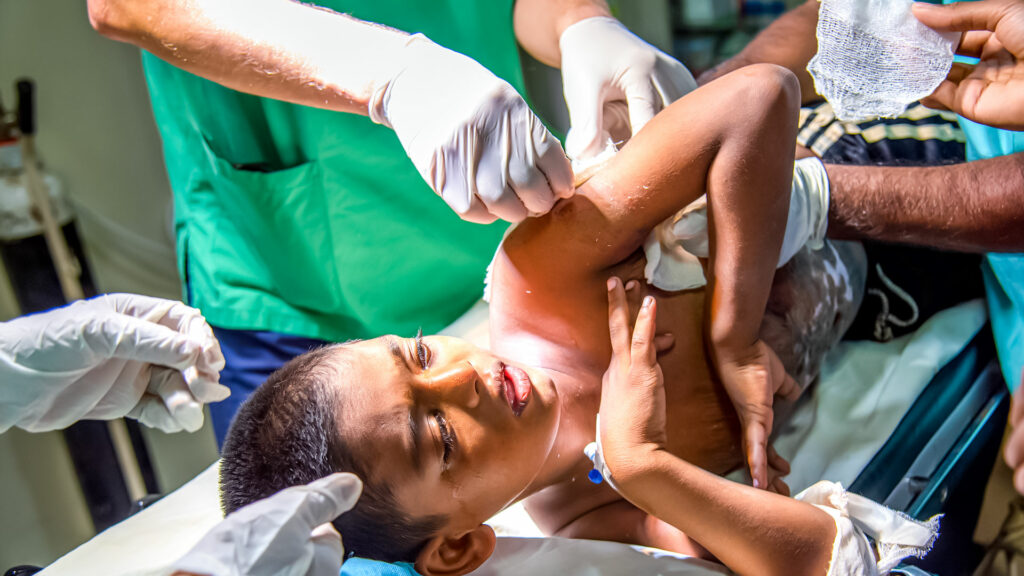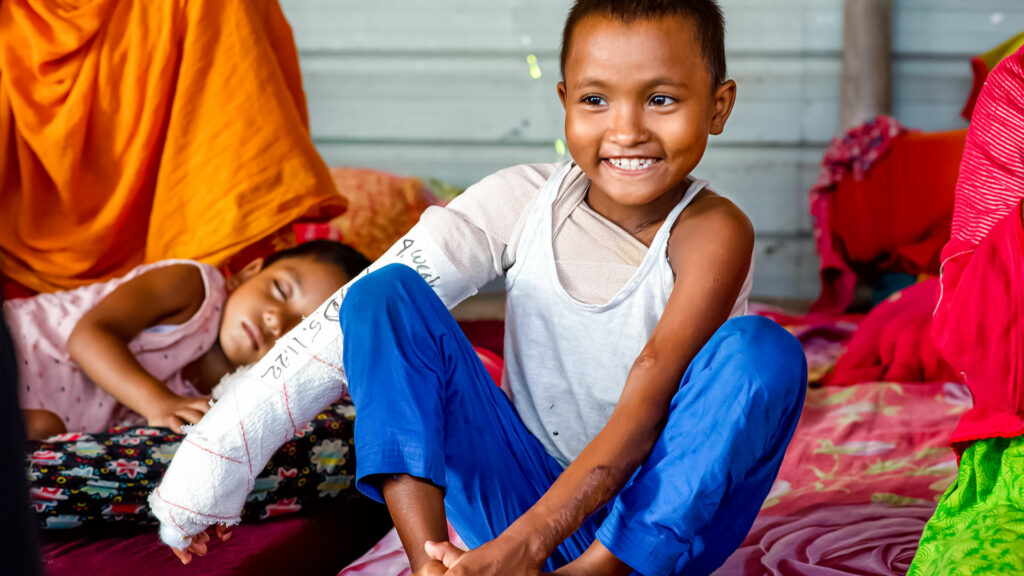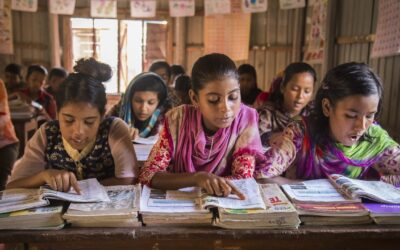Friendship carried out a weeklong surgery camp at its floating hospital to operate burn patients and raises awareness on preventable burn injuries

by Tahmeed Chaudhury
February 8, 2023
Mosammat Masuma Akhter was only three-and-a-half years old when she suffered third degree burns on her neck, chest and arms. Her mother had left the house for a moment to tend to an errand. Masuma rushed to the unattended kitchen and playfully turned on the stove, too young to be aware of the risks associated with it. The fire from the stove lit her clothes, engulfing her upper body. Thankfully, her grandmother was in the next room and rushed to her aid hearing her screams.
“The fire burned my neck, chest and arms. I was then hurried to the Kurigram Sadar hospital and given primary treatment. After multiple physiotherapy sessions and other treatments, the injuries in my chest and arms gradually healed, but my neck did not. In fact, it bent inwards and got attached to my chest,” says Masuma, now a seventh grader at a local primary school. She formed a contracture on the neck and had to go through eight surgeries in ten years. A contracture refers to the deformation of bones caused by burn injuries and they usually form if primary treatment is not given to the victim in a timely manner.
Similar to Masuma, Monisha was only five when she found herself in an unattended kitchen. In her case, the fire was already blazing on the stove and her silk clothes quickly caught fire when she went near it. Her mother found her ablaze and removed her clothes, but the damage had been done. Her arms and torso were already burned. Fortunately for her, she received timely treatment that kept her away from mortal danger but her life has been affected, nonetheless. While the rest of her body responded to treatment, her left arm was deformed by a contracture, and she required three surgeries to bring it back to shape. Now seven years old, Monisha is always smiling and jovial. “She has always been mischievous, running around the house and getting up to no good. I hope she overcomes this ordeal soon and is able to get on with life,” says her grandma from her bedside.

Masuma and Monisha were both operated on during a weeklong, intensive surgical camp for burn patients organised by Friendship at the second of Friendship’s two floating hospitals. The hospital ships move among the sandbar islands of the River Jamuna to deliver vital healthcare services, including general treatment, lab-testing, and surgeries. In these regions, orthodox healthcare facilities are impossible because the landscape is always shifting—making permanent infrastructure impossible. The hospital ships provide 81,000 medical services every year, charging up to 5 taka per person to women, children and otherwise disadvantaged people and up to 10 taka per person to able bodied men.
The surgical camp took place between October 31 and November 6, 2022, with 47 burn victims getting surgeries, many of whom were follow-up patients and have been suffering for years. “Most cases were of contracture patients who did not seek timely primary treatment and had disjointed limbs or body parts sticking to each other. We want to make sure these patients are able to perform tasks they could not before and become independent. That is the beauty of these surgeries—each patient will get a new life,” says Dr. Michael Prodip Singh, medical officer at the LAMB hospital in Dinajpur, who supervised the surgery team alongside Dr. Rasifur Rahman, resident medical officer at Friendship Hospital Shyamnagar.
Researchers and doctors from the Global Surgery Amsterdam (GSA), an international research and education institute that works to develop sustainable solutions in global surgery, were present during the camp in an observatory role. They are researching on the causes of burn injuries in developing countries and a team of specialised burn surgeons and researchers arrived in Bangladesh for their research and also conducted a basic burn course for doctors, paramedics and hospital staff of Friendship.

According to Dr. Matthijs Botman, plastic surgeon and general director at GSA, 350,000 people sustain burn injuries in Bangladesh every year. “95% of the patients with severe burn patients worldwide happened in the lower-middle income countries. In Bangladesh, especially in the rural areas, there are many situations that make it easy for burn injuries to happen—open fire places, for example, make children susceptible to injuries. These are all preventable and people here need to be made aware of the best practices to keep themselves and their children safe.”
Dr. Rafi Abul Hasnath Siddique, deputy director at Friendship’s Health sector, feels the inaccessibility of healthcare and the expenses associated with seeking treatment often make it difficult for people in rural communities to access these services. “Burn is one of the leading causes of disability among children in the rural areas of Bangladesh leading to huge social and economic burden. Friendship plays a vital role in organising surgical camps, providing a comprehensive package of services at the doorstep of the beneficiaries bringing an impactful change both in the life of the beneficiaries as well as the community as a whole.”
Eight surgeries later, Masuma is finally able to straighten her neck. Her surgery successfully separated it from her chest. She is looking forward to what life has to offer and is happy that she will be able to perform her responsibilities with more comfort. “I have spent a large portion of my life in hospitals and around doctors. I want to be a doctor myself when I grow up and serve people in difficulties.” Monisha on the other hand, is more mischievous than ever. With her left arm contracture released, she is hopping from one bed to the next and running around the ward with a wide smile on her face. Her grandmother continues, “Seeing her arm freed gives me a sense of relief. I am hopeful that she will recover soon, and be able to lead a normal life and fulfil her dreams.”



